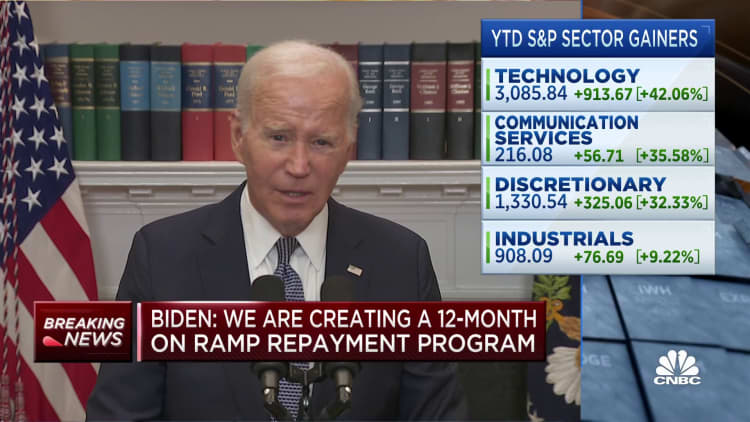Fotostorm | E+ | Getty Images
The Massachusetts Executive Office of Health and Human Services announced this week that it would be awarding about $140 million in student loan relief to more than 2,900 workers in the state.
The aid comes from the MA Repay Program, which the state launched last November to provide financial support to health-care workers, including psychiatrists, psychologists, nurses and social workers.
“The MA Repay Program will be life-changing for thousands of our hardworking health-care professionals while also helping more people enter and stay in this critical industry that has been suffering from workforce shortages,” Massachusetts Gov. Maura Healey said in a statement.
The student loan awards range between $12,500 and $300,000 per borrower.
More from Personal Finance:
Even millionaires feel financially insecure
Don’t borrow money for your wedding
Here’s how much people really tip post-pandemic
To be eligible, residents usually need to commit to work for a qualifying employer for four or five years. The most recent application window ran between Dec. 5, 2022, and Jan. 30, 2023.
The Massachusetts program is one of the many state efforts to reduce people’s education debt burden. These opportunities are likely to be especially attractive to borrowers of late. In June, the U.S. Supreme Court blocked President Joe Biden’s plan to deliver loan cancellation nationwide.
“There are many other opportunities for loan forgiveness that often go unknown because there is no global database of all student loan forgiveness options,” said higher education expert Mark Kantrowitz.
Forgiveness for teachers, nurses and others
In New York, the Get On Your Feet Loan Forgiveness Program, rolled out in 2015, is meant to “invest in recent college graduates with student loan debt who opted to invest their futures in New York,” said Angela Liotta, public information officer and director of communications at the New York State Higher Education Services Corp.
Under the program, certain residents of the state may be eligible for student loan forgiveness on up to 24 months of payments.
“Student loan forgiveness is based on the borrower’s occupation, in most cases,” Kantrowitz said. “So they should look for forgiveness based on their job, especially for their state.”

For example, lawyers in Texas who work for specific legal aid programs may be eligible for the Texas Student Loan Repayment Assistance Program.
Meanwhile, there are also several existing federal relief programs.
Full-time teachers who work for five consecutive years in a low-income school may be eligible for up to $17,500 in loan forgiveness under the Teacher Loan Forgiveness Program. The Nurse Corps Loan Repayment Program allows certain nurses to get up to 85% of their student debt canceled.
Federal agencies also offer student loan repayment assistance programs, Kantrowitz said. Agencies can make payments to a federal employee of up to $10,000 a year, for a total of $60,000, according to the U.S. Office of Personnel Management.

